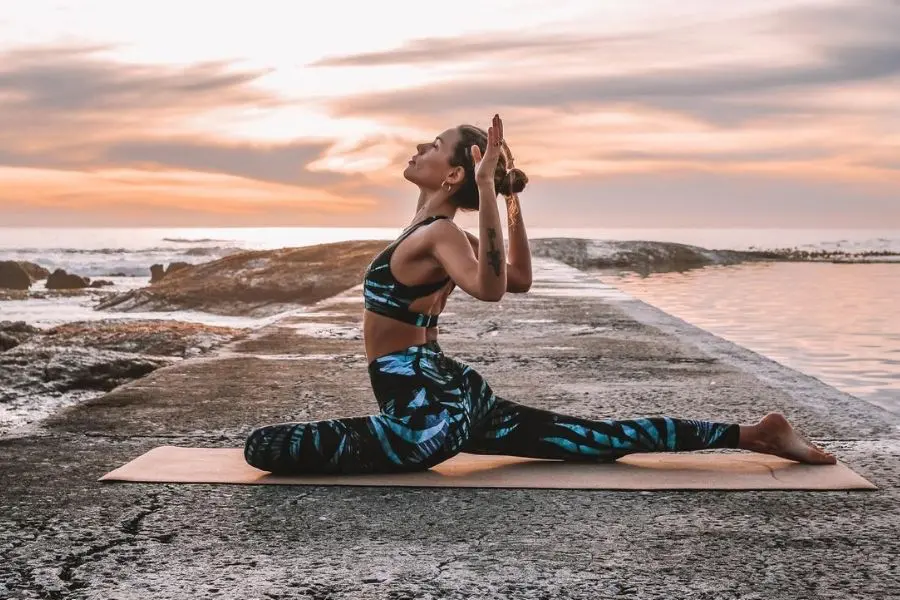Yoga is a powerful practice that has been around for thousands of years and has many variations. Ashtanga and Vinyasa yoga are two popular forms of yoga that are often confused with one another. Although they share some similarities, there are also some key differences that set them apart. In this article, we will explore the main differences between Ashtanga and Vinyasa yoga.
Ashtanga Yoga:
Ashtanga yoga is a traditional style of yoga that was developed in the early 20th century by Sri K. Pattabhi Jois. It is a rigorous and physically demanding practice that involves a set sequence of postures that are performed in a specific order.
There are six series of Ashtanga yoga, each with a different level of difficulty. Ashtanga yoga is sometimes referred to as “power yoga” due to its physically demanding nature.
One of the key aspects of Ashtanga yoga is the focus on the breath. Practitioners are instructed to perform each movement with a specific breath, which helps to create a meditative state of mind. Ashtanga yoga is also known for its use of bandhas, which are energy locks that help to control the flow of prana (life force energy) throughout the body.
Vinyasa Yoga:
Vinyasa yoga is a more modern form of yoga that was developed in the 1980s. It is a dynamic practice that involves linking breath with movement. In Vinyasa yoga, each movement is synchronized with a specific inhale or exhale, creating a flowing sequence of poses.
Vinyasa yoga is often referred to as “flow yoga” because of its continuous movement and fluid transitions between poses. There is no set sequence in Vinyasa yoga, so each class can be different. This allows for more creativity and spontaneity in the practice.
One of the key aspects of Vinyasa yoga is the focus on the breath. Just like in Ashtanga yoga, each movement is synchronized with a specific breath. This helps to create a sense of mindfulness and present moment awareness.
Key Differences:
Now that we have a basic understanding of Ashtanga and Vinyasa yoga, let’s explore some of the key differences between the two:
- Sequence: Ashtanga yoga follows a specific sequence of postures that is the same in every class. Vinyasa yoga, on the other hand, has no set sequence, allowing for more creativity and variation in each class.
- Repetition: Ashtanga yoga involves repeating the same sequence of postures in each class, while Vinyasa yoga involves more variety in the postures and sequences.
- Intensity: Ashtanga yoga is generally more physically demanding than Vinyasa yoga due to its set sequence and the use of bandhas. Vinyasa yoga can be more gentle or more intense depending on the teacher and the class.
- Focus: Ashtanga yoga places a strong emphasis on the breath and the use of bandhas, while Vinyasa yoga focuses on linking breath with movement.
Here’s a comparison table between Ashtanga and Vinyasa yoga:
| Ashtanga Yoga | Vinyasa Yoga | |
|---|---|---|
| Focus | Structured sequence of poses | Creative sequencing with fluid transitions |
| Breath | Ujjayi breath used throughout practice | Breath synchronized with movement |
| Pace | Fast-paced and rigorous | Varies depending on the class |
| Repetition | Fixed sequence of poses, same order every time | No fixed sequence, poses can vary |
| Difficulty | Can be challenging and physically demanding | Can be modified for all levels |
| Props | Typically no props used | Props may be used for support and alignment |
| Tradition | Traditional, rigid approach to yoga | Modern, adaptable approach to yoga |
Keep in mind that these are general differences, and that individual teachers and classes may differ in their approach to each style.
Conclusion:
Both Ashtanga and Vinyasa yoga are great forms of yoga that offer many benefits for the mind and body.
- Ashtanga yoga is a more traditional and structured practice that is physically demanding and focuses on the breath and the use of bandhas.
- Vinyasa yoga is a more modern and creative practice that involves linking breath with movement and allows for more variation in the postures and sequences.
Ultimately, the choice between Ashtanga and Vinyasa yoga will depend on your personal preferences and goals for your yoga practice.
Originally posted 2023-04-15 23:02:20.





